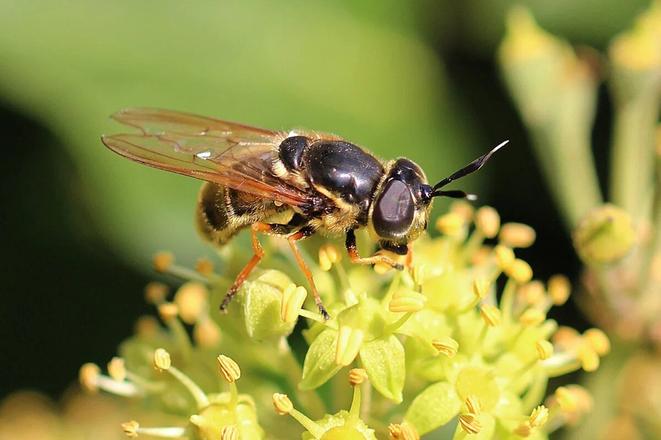Zoologist Marek Semelbauer recently came across an unusual species of insects in Zámocký Park in Malacky, western Slovakia. It was a group of hoverflies that are among the most studied in the world in connection with pollination.
"I was lucky," Semelbauer told the My Záhorie website.
Scientists currently know about 6,000 species of hoverfly, of which almost 400 can be found in Slovakia. They are comparable to bees in terms of the diversity of species. However, Semelbauer came across two rare species: the ivy hoverfly and the golden long-horned hoverfly.
"These are rare and rarely observed species. So far, they have not been reported in Slovakia," Semelbauer noted.
They are interesting from a conservation and zoological point of view.
Living in old trees
They are rare mainly because they are tied to a special microhabitat - wet cavities in old trees. Even though half of Slovakia is covered with forest, suitable hollows are hard to find here. Therefore, hoverflies are considered endangered in Europe, some even critically.
Old parks, like Zámocký Park, are more biologically valuable than ordinary forests. In commercial forests, logging takes place about once every 100 years. Trees grow in parks for several hundred years.
Semelbauer noted that hoverflies are often overlooked – but that gardeners should appreciate certain types of hoverflies.
The marmalade hoverfly is probably the most common hoverfly in Slovak gardens. It is easily recognised by its orange belly and unique pattern. In addition to its usual stripes, it also has whiskers.
An ice-cool, cobra-like predator
At first glance, a hoverfly larva hardly looks like a predator.
"The larvae of these flies feed on meat, especially small insects - aphids, but also worms, mites and some caterpillars," the zoologist said.
They are thus a positive for gardeners.
The larva grabs its victim with its mouth, assumes the position of a cobra, raising the aphid above the level of the others.
"Thanks to this, the alarm pheromone does not reach the other aphids and the larva does not have to chase them like frightened cows," said Semelbauer. "They come out to hunt at dusk, so we rarely see them."
Therefore, unfortunately, we tend to underestimate their importance, he added.
Like miniature helicopters
Semelbauer added that hoverflies are excellent flyers. Their ability to hover in the air like a miniature helicopter is very typical. They cover hundreds of kilometres in their lifetime, playing an important role in plant pollination.
"They've got no home," he said.
As a result, the spring wave of migrants carries pollen from the south to the north, and the autumn wave the other way around. Hoverflies thus preserve the genetic connection between very distant or isolated plant populations.
Author: Kristýna Peštová


 Hoverflies preserve the genetic connection between very distant or isolated plant populations. (source: Marek Semelbauer)
Hoverflies preserve the genetic connection between very distant or isolated plant populations. (source: Marek Semelbauer)